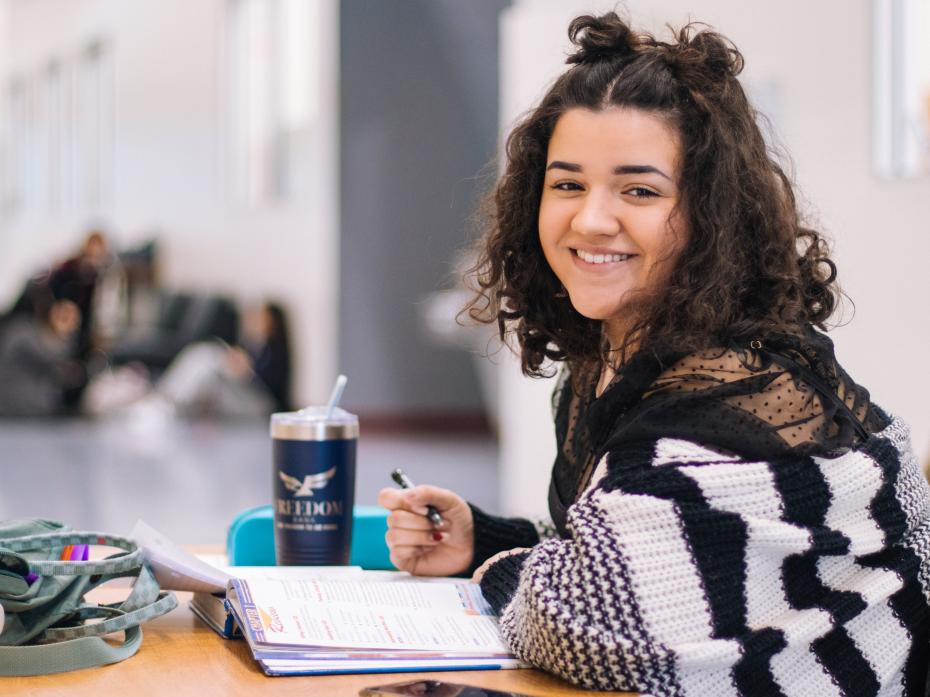Co-creation, at its heart, is about students and staff working together. Instead of learning, teaching or curriculum design being something done to students, co-creation is something done with students.
This is not to imply that staff expertise is no longer useful − on the contrary, their disciplinary and teaching expertise is highly valuable, but when combined with students’ expertise as students, the potential knowledge, skills and creativity are enhanced.
Co-creation is underpinned by values such as shared responsibility, respect and reciprocity, and students have the opportunity for greater agency and decision-making. I believe that co-creation is not a process that necessarily belongs to face-to-face, on-campus initiatives, rather that it is a mindset and set of values that you bring to whatever setting you find yourself in.
There are many diverse forms of co-creation. Some projects focus on co-creation of the curriculum (usually taking place before a course or programme begins) or sometimes on co-creation in the curriculum (usually involving negotiation of elements of a course or programme while it unfolds).
Other co-creation focuses on extracurricular or university-wide initiatives. Some examples involve selecting one or just a few students, while others involve a whole class. There are co-creation projects (usually extracurricular) where students are paid for their involvement, and others (usually involving all students in a class) where students receive the usual course credit at the end of the course.
There are hundreds of examples of co-creation from around the world. There are curriculum design committees involving future and former students working alongside staff to co-design a course; co-creation of essay titles; negotiation of the assessment weighting between several assessments; using a shared PowerPoint slide deck, where students contribute slides and then teach or share their slides with the rest of the class; inviting students to share ideas for what they need to learn during the semester in order to complete their group assignment. The first example involves the selection of a small group of students, while the others involve the whole class in numerous ways, offering different levels of agency and involvement.
Many of us are currently learning and teaching from bedrooms, kitchen tables and living rooms. It begs the question of whether co-creation is still relevant, or even possible. Emphatically: yes.
Co-creation is ultimately about a different mindset, one that challenges the ways many of us have been led to believe learning and teaching should be carried out. It is about working with students, being open to their ideas and views, developing shared goals and realising that teaching and learning is better when done with students. Where colleagues are adopting this mindset, some exciting and inspiring things are happening. I offer two examples from my own institution:
Within the Usher Institute at the University of Edinburgh, colleagues have established the Usher Network for Covid-19 Evidence Reviews (Uncover), a research network of university staff, students and alumni across public health and related disciplines. Staff were being approached by national organisations to provide reviews of Covid-19-related evidence within very tight deadlines. They quickly realised the value of involving master’s in public health students and alumni in this work, where systematic reviews typically need a team of researchers, and recognised that there was a valuable opportunity for students and alumni to benefit from involvement in this authentic experience. This has been an incredibly successful example of co-research and co-creation, which offers lessons for future ways of working.
The university’s School of Mathematics launched the Adapt, Support, Implement, Deliver (ASID) project in summer 2020, focused on planning for hybrid teaching in semester one of 2020-21. The ASID project employed a large group of student interns to co-create the vision of hybrid teaching alongside staff. By adopting a co-creation approach, not only were students’ voices influencing decisions and highlighting the very real challenges faced by students, their contributions ensured that the transition to hybrid teaching and learning was well supported from both a staff and student perspective.
There have been many other examples of co-creation taking place from living rooms this year. It is far more about mindset than suitability for a particular setting, and the evidence demonstrating the benefits of co-creation is growing.
In one recent study, all the student participants said that the co-created courses to which they contributed were the best courses they experienced at university. I believe we have a duty to act on this growing evidence by ensuring that all students have the opportunity to experience co-created learning and teaching during their time at university, whether in their living room, on campus or in new, hybrid spaces and places.
These glowing reports from students result directly from the processes and practices of co-created learning and teaching. I know from my own experiences of co-creation with students that they speak passionately about the experience of being treated with respect, like human beings, rather than as an anonymous unit within a cohort.
Students are excited by having agency over elements of their learning experiences − when I offer the opportunity to create shared learning goals and assessment projects, it engenders shared responsibility and an energy I don’t see in courses that are not co-created. Students often develop a deep motivation for, and understanding of, learning, and some report going on to further postgraduate study when they had not considered it previously.
In other words, co-creation is deeply transformative − it can change students and what they want to achieve at university and beyond.
Catherine Bovill is senior lecturer in student engagement at the Institute for Academic Development at the University of Edinburgh.
If you would like advice and insight from academics and university staff delivered direct to your inbox each week, sign up for the Campus newsletter.




comment